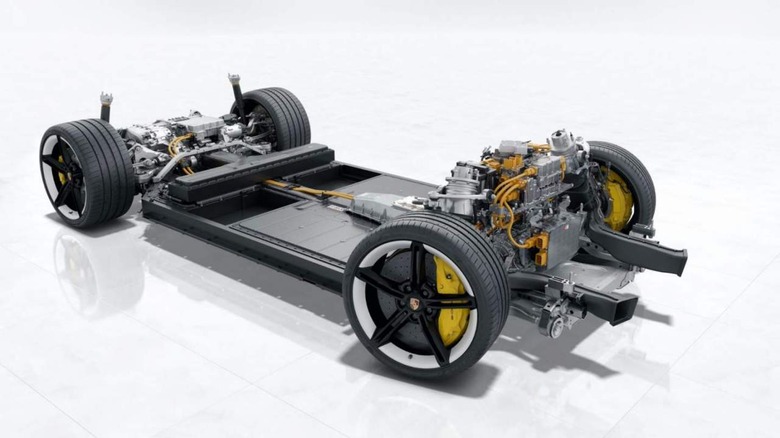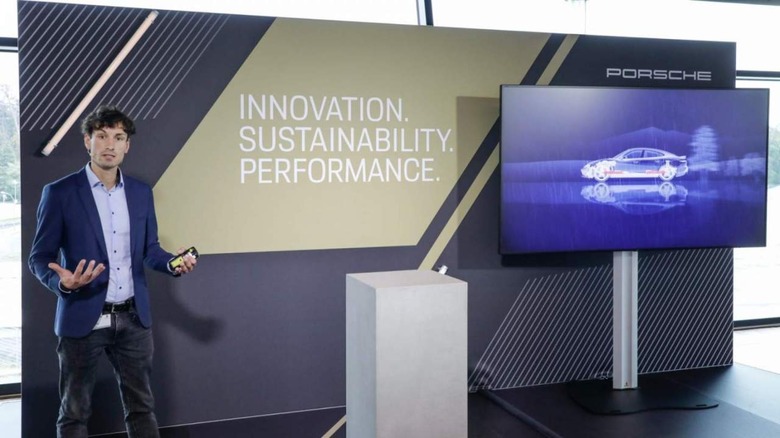Porsche Digital Chassis Twin Technology Can Predict Servicing Intervals And More
Porsche is utilizing the digital world in a new and innovative light. The German automaker's been working on a digital twin concept or "chassis twin." It's eerily similar to the 'ghost car' in Gran Turismo racing games, but it has more to do with enhancing the driving and ownership experience than improving your lap times.
So, what's a digital twin or chassis twin? "It's a virtual copy of an existing object that allows data-driven analysis, monitoring, and diagnostics without the challenges and constraints of real-world tests," said the automaker. The object can be anything from a physical object to a system or a specific component in the vehicle. The cool part is you can diagnose or monitor the virtual copy without touching or physically interacting with the actual piece. Welcome to the future, folks!
Porsche engineers and software specialists have been working on a digital twin concept for the past three years, mainly focusing on the chassis (hence the name 'chassis twin'). The project is under the helm of CARIAD, a standalone automotive software company operating within the constraints of the Volkswagen Group.

In addition, digital chassis twinning technology is now at work in the Porsche Taycan EV (almost half of Taycan owners have opted-in for the service, said Porsche), particularly the air suspension. For instance, if your Taycan hits a pothole, the system can predict if the dampers need replacing by analyzing data from the chassis sensors. In return, the car can alert the driver of possible suspension failure and suggest a dealership for replacing.
Furthermore, all relevant sensor data feeds through a central backend system via Porsche Connect. From there, computer algorithms compare data from each vehicle against the fleet data. Advanced artificial intelligence within the car and the centralized system constantly monitors and improves the accuracy of the algorithms. Porsche claims this innovative approach ensures early wear detection and prevents breakdowns.

What about data privacy, you ask? Porsche said data privacy is of utmost priority, and all the data are collected anonymously. Porsche owners can deactivate the service at any time, and you need to offer consent before the data collection begins. In addition, digital twinning is possible without adding more sensors or cameras to the vehicle. The system uses sensors that are already in the car to keep production costs low.
And when you think about it, Porsche can apply its digital chassis technology to almost all the components in a car. It can issue warnings of dangerous road conditions by crowdsourcing road maps and road friction levels. It can even project the residual value of your vehicle by analyzing your driving habits, although Porsche is reserving this feature for future applications.
Lastly, Porsche is launching the production version of its digital chassis twin next year. Like in the Taycan, the system will gather "sensor data directly from mechatronic components," said Porsche, with other functionalities coming very soon.
